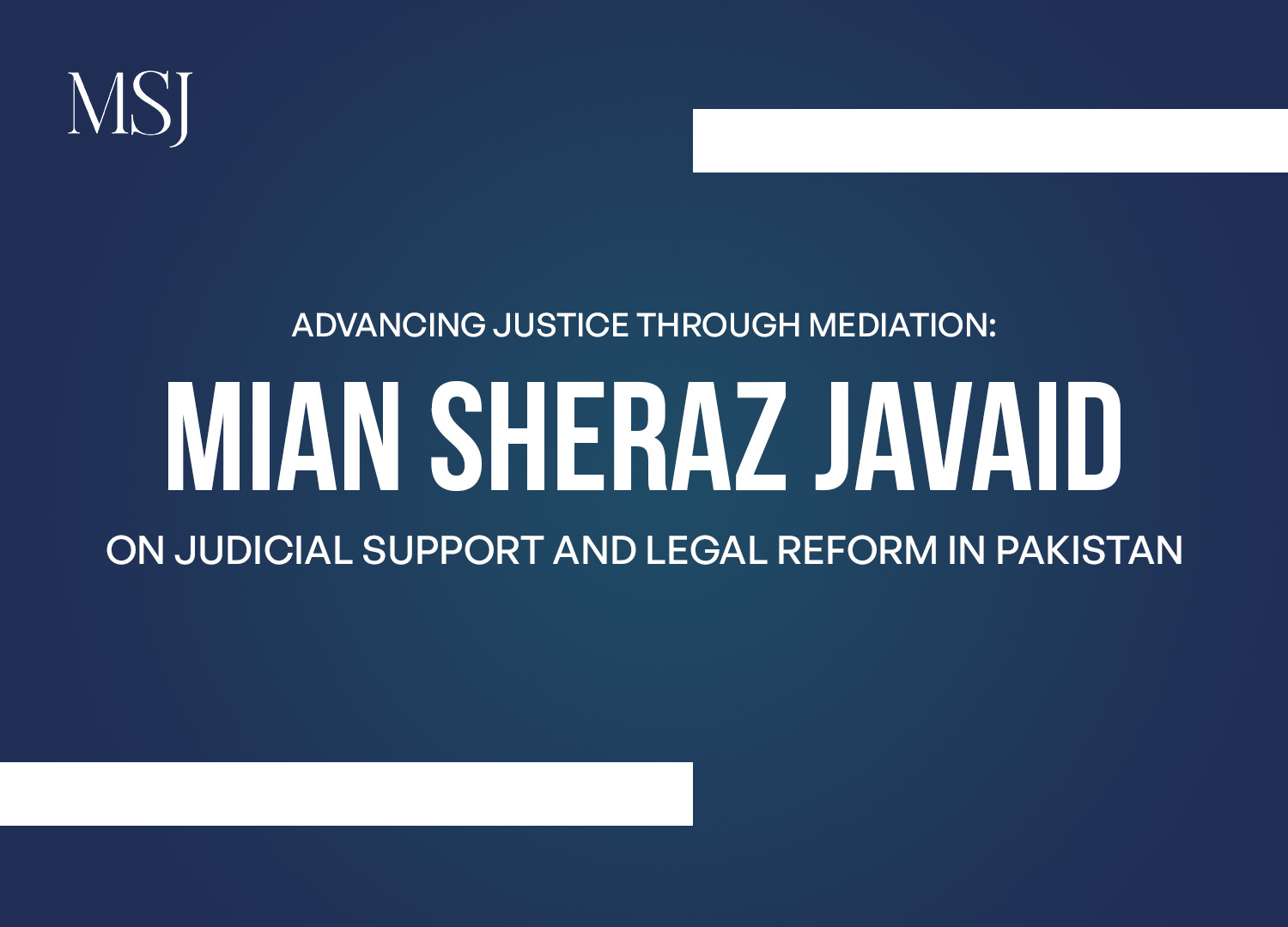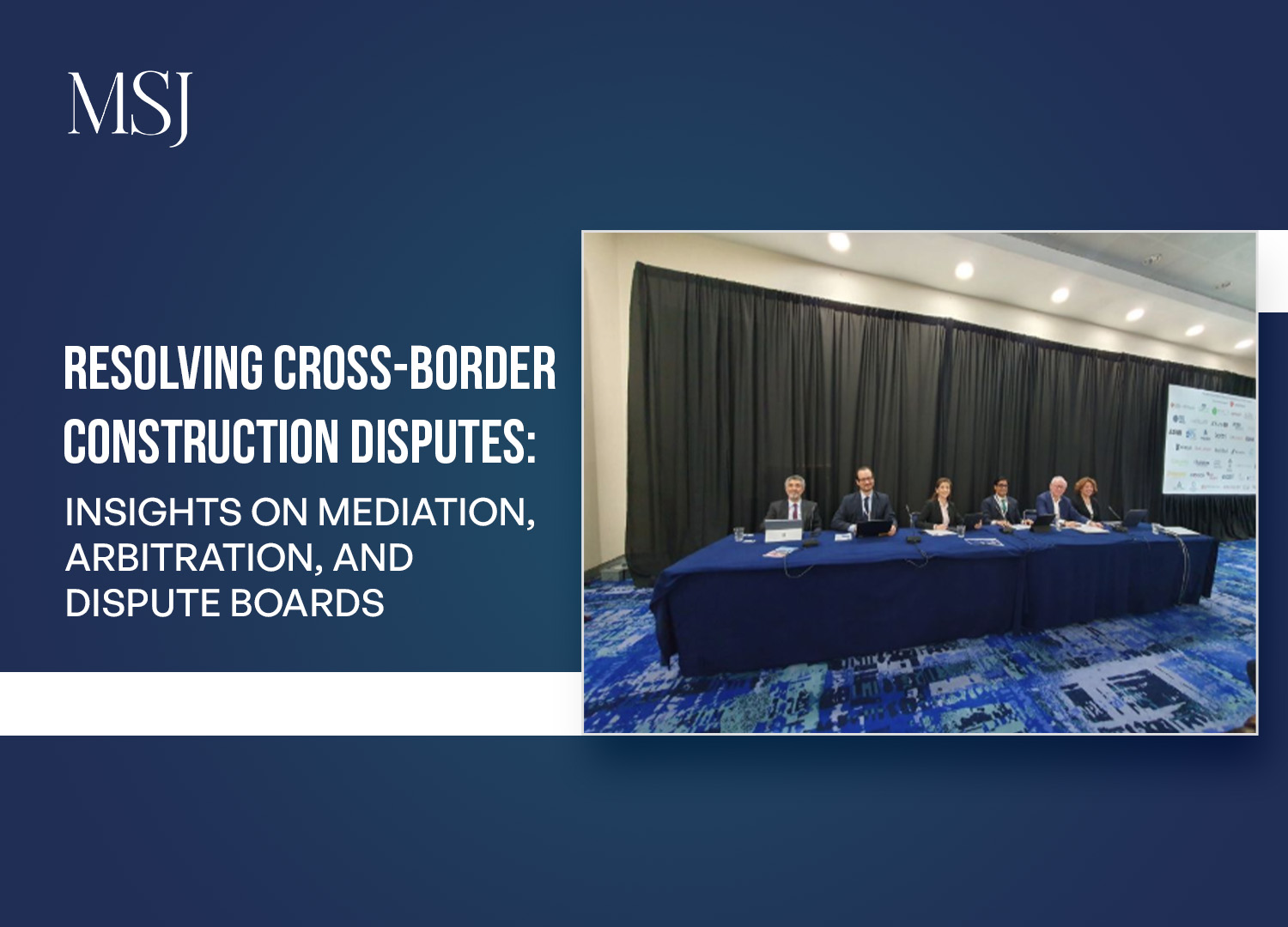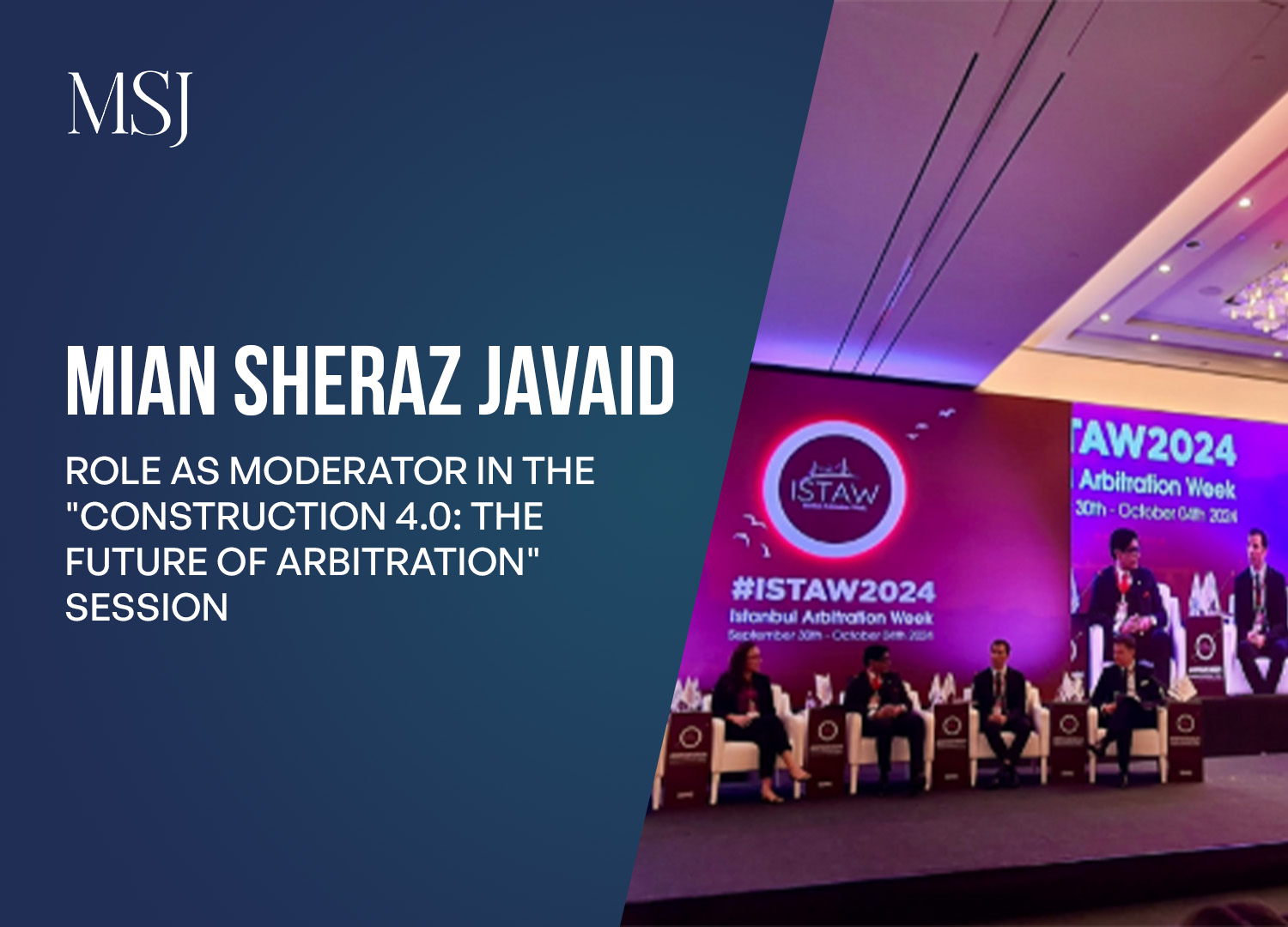Multi-Tier Dispute Resolution: Best Practices for Managing International Investment Disputes
The presentation by Mian Sheraz Javaid discusses the growing importance and role of Multi-Tier Dispute Resolution Clauses (MTDC) in managing and resolving international investment disputes. The clauses have emerged as part of the best practices in dispute resolution, especially in sectors that are complex, high-value, and long-term in nature, such as energy, construction, and infrastructure. The presentation brought out the structured approach of MTDCs to the resolution of disputes, thereby providing parties with various stages of dispute management before the need to refer to arbitration or litigation.
Purpose and Benefits of MTDCs
According to Sheraz, MTDCs are drafted to afford parties a low-cost, time-efficient, and non-confrontational way of resolving disputes. In most cases, these clauses involve multiple steps that parties need to take before moving to more formal dispute resolution methods such as arbitration or litigation, which may include negotiation, mediation, and dispute board processes. The first and most significant advantage of MTDCs is that it provides parties an opportunity to "cool off" and reassess their positions to create a way out for compromise without letting the situation get out of hand. It saves time and costs, not to mention preventing a small matter from growing into a larger legal battle.
MTDCs are most important when it comes to international investment where a long-term relationship or significant stakes may be involved. MTDCs can further obviate litigation that might poison the business relationship by providing a platform for stakeholders to enter into constructive dialogue, reach mutually agreeable solutions, and avoid huge stakes of litigation that tend to cost a lot financially and emotionally, especially in the construction and energy sectors, as pointed out by Sheraz.
Evolution and Adoption of MTDCs
Sheraz traced back the development curve of MTDCs, arguing that the new dispute boards were first promulgated and introduced in 1970 under the United States Engineer's Agreement as a result of the engineer's adjudication. He explained that this was demonstrated with the success of dispute boards on major infrastructure projects, such as the Eisenhower Tunnel Contract in Colorado and the World Bank-funded El Cajon Dam in Honduras, where having an early structured approach towards resolving disputes worked well. These successes led both the World Bank and the International Federation of Consulting Engineers (FIDIC) to include dispute boards in their contractual documents in the 1990s, making them a standard first stage in dispute resolution.
Initially, courts in England showed scepticism towards agreements to negotiate or resolve disputes amicably. However, he pointed out that such a stance has changed with time. Sheraz referenced the case of Walford v. Miles (1992), where the House of Lords declared that an agreement to negotiate is too uncertain to be enforceable. However, the use of MTDCs has increasingly been used in international investment contracts. International investments, and in particular into the energy or construction sectors where high-value project complexities require efficacious mechanisms to resolve disputes between parties, drive the increasing growth of MTDCs.
MTDCs in Modern International Investment Contexts
Sheraz has emphasised how MTDCs have become the norm in modern international investment contexts, especially in the energy and construction sectors, as these projects are long-term and complex. The clauses are now an integral part of energy contracts, such as joint venture agreements and complex construction contracts, where technical and financial stakes are high. Sheraz also debated how BRI has translated to an increase in the numbers of MTDCs, especially in projects such as those under the China-Pakistan Economic Corridor (CPEC), for which dispute boards constitute a significant part of the process of dispute resolution.
Courts have recognised MTDCs as having public interest benefits, for example, by promoting faster, cheaper, and less adversarial methods of dispute resolution. Sheraz cited the case of Cable & Wireless Plc v. IBM United Kingdom Ltd (2002), in which the court upheld a provision requiring parties to engage in an ADR process before proceeding to litigation. This case highlighted that MTDCs can be enforceable when the procedure is clear and certain, reinforcing their growing acceptance in international investment contracts.
Statistical Success of MTDCs
Sheraz presented some statistics to prove the effectiveness and increasing applicability of MTDCs around the world. One study by the Hong Kong International Arbitration Centre (HKIAC) showed that more than 60% of their cases involved MTDCs. The energy sector found that in more than 70% of the contracts, multi-tier clauses appeared, regarding this complexity and long-term engagements in such projects. According to the International Chamber of Commerce, there was a growth of 15% in the use of MTDCs in its administered cases over the last five years. Sheraz believes that the region Asia has indeed witnessed the highest growth in using MTDCs in large-scale infrastructure projects linked to the BRI.
Criticisms and Challenges of MTDCs
With regard to the above, Sheraz admitted that some criticisms and difficulties are attributed to MTDCs. One such criticism is the uneconomic nature of the clauses. A lot of resources and time go to waste through MTDCs, particularly in the mediation and conciliation stages of the process where the outcomes will not be binding directly. Sheraz realised that the non-binding phases would add both cost and time, as it will take more steps to reach the binding resolution before parties can consider it final. In some situations, non-obliging parties may use the MTDC to prolong the settlement of the case, which eventually makes the arbitration or litigation process later on even costlier and takes more time.
But Sheraz countered this criticism by emphasising the potential of MTDCs to help de-escalate conflicts. Even when MTDCs do not fully resolve a dispute, they can narrow the issues for arbitration, thus making the process more efficient. He also mentioned that mediation and conciliation can preserve relationships between parties, which is often crucial for long-term business partnerships. In contrast, arbitration and litigation can immensely damage such relationships because they are adversarial in nature. Sheraz suggested that whenever the MTDCs are properly designed with time-limitation periods, they can minimise delays and additional costs.
Admissibility and Jurisdictional Objections in MTDCs
A major concern that Sheraz raised was admissibility or jurisdictional objections during arbitration if parties have not fully complied with the pre-arbitration dispute resolution steps. MTDCs usually provide that parties are obligated to exhaust all pre-arbitration steps, which include mediation and conciliation, before proceeding to arbitration. According to Javaid, if the same steps are not adhered to, there will likely be objections about admissibility because courts and tribunals would start wondering if the preconditions necessary for arbitration have been satisfied.
He cited the case of SNC-Lavalin Group Inc. v. ArcelorMittal (Canada), where the court held that failure to comply with a mandatory conciliation process resulted in a stay of arbitration. In the case of C v. D, the Hong Kong Court of Appeal held that non-compliance with a pre-arbitration negotiation step raised issues of admissibility, not jurisdiction, and therefore the tribunal had discretion to determine whether the necessary preconditions had been met.
Conclusion
In conclusion, Sheraz reaffirmed that MTDCs have become an essential tool in managing international investment disputes, particularly in industries with complex, high-value projects. While challenges such as delays and increased costs exist, the overall benefits of these clauses in resolving disputes, preserving relationships, and reducing the need for arbitration or litigation are significant. Sheraz predicted that as international investments continue to grow, the use of MTDCs will increase, providing a structured and effective means of resolving disputes in a more cost-effective, efficient, and less adversarial manner.






